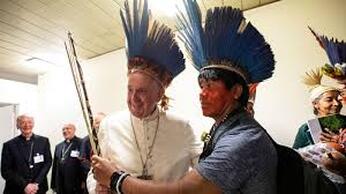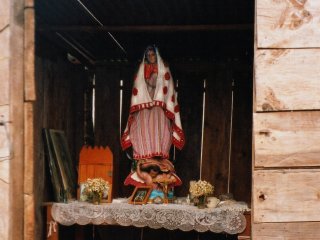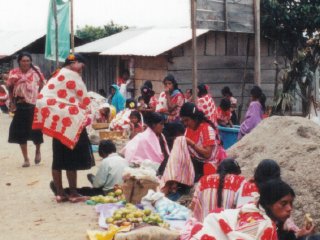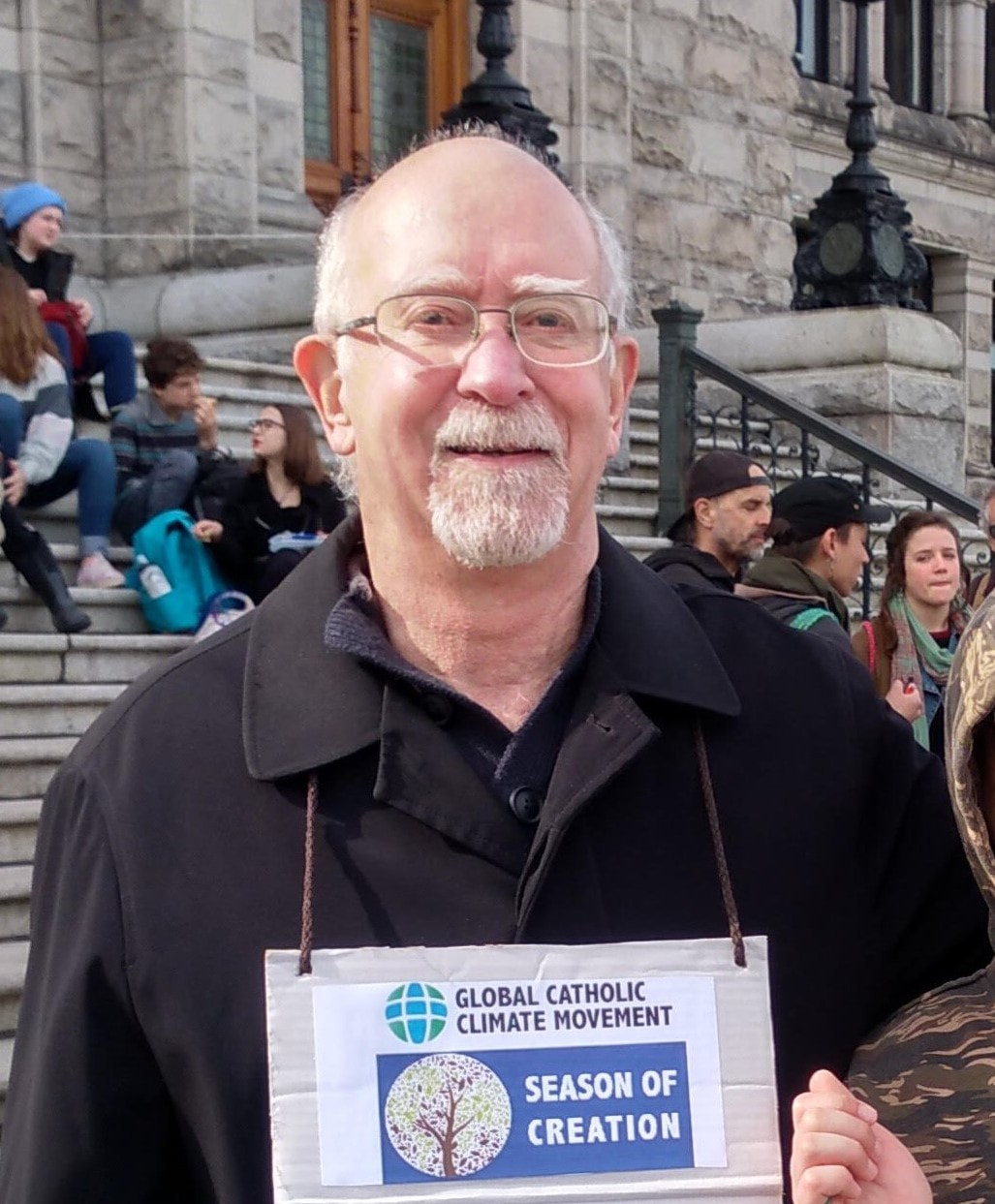| Simplicity: The following quotation summarizes one of the two themes of the Synod. “17. The listening to the clamor of the earth and the cry of the poor and of the peoples of Amazonia with those that walk with us, calls us to a true integral conversion, with a simple and sober life, all nourished by a mystical spirituality in the style of Saint Francis of Assisi, | Photo: nationalreview.com |
Inculturation: Bishop David Martìnez De Aguirre Guinea, Apostolic Vicar of Puerto Maldonado in Peru, said one of the strongest themes to come out of the Synod was inculturation, or how to harmonize local cultures with the Church.
Inculturation is the acquisition of the characteristics and norms of a culture by another culture, and, in the context of this article, the adaptation of the way Church teachings are presented to other, non-Christian, cultures and, in turn, the influence of those cultures on the evolution of these teachings. Historical examples would be the influence of Greek pagan philosphers (e.g. Plato & Aristotle) on Catholic doctrine; and the timing of Christmas to coincide with the winter solstice (Yule) or celebration of the pagan Roman Sol Invictus (Unconquered Sun) i.e. Christianity appropriated pagan ideas by adopting new meaning or adapting meaning or events to coincide and harmonise with Christian beliefs.
All human experience occurs within a cultural setting. The Gospels’ background was Judaic and Greco-Roman. The Catholic Church is by definition universal, in which case should it not take all cultures into consideration? Does it?
Cardinal Cláudio Hummes, OFM spoke at a mass 20 Oct 2019 where a new Pact of the Catacombs [next blog posting] was signed: “welcoming and valuing cultural, ethnic and linguistic diversity in a respectful dialogue with all spiritual traditions." Synod members pledged simplicity, & closeness to the poor (Cindy Wooden Catholic News Service 10.21.2019)
‘The Cry of the Poor, Together with that of the Earth, Has Reached Us from the Amazon . . . We Cannot Pretend We Haven’t Heard It’ (Pope Francis, Before the Angelus, Zenit, 27 Oct 2019) Let us ask ourselves today: “What good thing can I do for the Gospel?” We were asked this in the Synod, desiring to open new pathways for the proclamation of the Gospel. … For the journey ahead, we invoke the Virgin Mary, venerated and loved as Queen of Amazonia. She became so not by conquering but by “inculturating herself”: with the humble courage of a mother, she became the protectress of her little ones, the defense of the oppressed.” [emphasis added.]
Unfortunately, an issue of controversy concerning inculturation has been reported. As a Laudato Si’ Animator, I am torn between ignoring or even rebutting such criticism and thinking I should at least know what is out there and perhaps alert others. It is in the spirit of the latter belief that I include the criticism. I do not write off the critics; just their criticism which I certainly do not share nor want to propagate.
| Pope Francis told bishops at theInculturation: Pachamama A two-foot-high wooden carving of a naked pregnant woman was presented as "Our Lady of the Amazon" to Pope Francis on the first day of the synod (Oct. 4), at a tree-planting ceremony at the Vatican Gardens. The statue was part of exhibits on the Amazon region displayed in the Church of St. Mary in Traspontina during the Synod of Bishops for the Amazon in Rome. A video of the event immediately created a kerfuffle among some Catholics, who criticized it as a pagan symbol and an attempt by the current pontificate to undermine the Catholic faith. Other Catholics defended the carving, which was said to represent the Incan goddess Pachamama, as an acknowledgement of the culture of the indigenous people in the Amazon. Opponents of this view stole the statues and threw them into the river Tiber. READ MORE Referring to the statue as "Pachamama," like many media had done, Pope Francis told bishops at the synod that the statues had | Pachamama CNS photo/Paul Haring |
The pope also said that the statues, which floated, had been recovered by Italian police. The statues, "which created such a media clamor," he said, "were not damaged."
The Vatican press department dismissed the notion that the pope was endorsing paganism, but in a synod that has raised questions of married priests and infusing indigenous culture into Catholic rites, Pachamama nevertheless immediately became a symbol of the ideological wars surrounding the synod.
Why the opposition to this statue? Was it Pachamama or has it become Our Lady of the Amazon? I would suggest that like beauty, surely the answer lies in the mind of the beholder! To me, if Pachamama is a reflection of South American, including Amazonian, Indigenous spirituality and pre Christian paganism, let us rejoice because through inculturation does it not closely resemble Franciscan spirituality as exemplified by “Our Sister Mother Earth” in the Canticle of the Creatures: “Praised be You, my Lord, through our Sister, Mother Earth who sustains and governs us, …?”
Are we Franciscans accused of syncretism, pantheism, paganism or idolatory? If so, let me borrow the recent words of Greta Thunberg and apply them (albeit in a different context): “How dare you!” And how much more pro-life can the depiction of a pregnant women be? Or is a pregnant woman not pro-life and made in the image of God if she is pagan? Does not God also love pagans?
All this opposition comes from Catholics some of whom link the Amazon Synod to liberation theology, Marxism, even to Mikhail Gorbachev; in spite of the fact that one of the “founders” of liberation theology, Fr Gustavo Gutiérrez (who later became a Dominican), said liberation theology was 90% “preferential option for the poor” which you may recognise is a principle of Catholic Social Doctrine. Do the opponents have a narrow view of Catholicism and not understand the realities of the Amazon within the universal nature of the Church or accept the concept or necessity of inculturation? Since when is theft, vandalism and ignorant insularity the answer?
After I wrote this I received the following from a Mexican Bishop I had met in Chiapas: Is ‘Pachamama’ a Goddess? Asks Monsignor Felipe Arizmendi Esquivel. See also: Sometimes a Statue is Just a Statue
Inculturation: An Episcopal Consecration
Dom Pedro Casaldáliga, a Catalan Cordimarian religious was consecrated bishop in 1971 in the city of São Felix do Araguaia in the Brazilian state of Mato Grosso by Pope Paul VI. A prominent representative of Liberation Theology, Archbishop Tomás Balduino, Bishop Emeritus of Goiás Velho … reported: “Pedro… was surrounded by the poor people of that region. He received the liturgical symbols that were inculturated in the cultures of indigenous and peasant peoples. The mitre was a straw hat, the staff a tapirape oar, and the ring was made of tucum becoming, on his finger and those of many pastoral agents, a sign of his commitment to the journey of liberation.”
Bishop Pedro Casaldáliga transferred the diocesan government to his successor, Bishop Leonardo Steiner: “[Pedro], on handing Leonardo the tucum ring, recalled that the causes we defend define who we are and that the causes of this Church are known to all: the option for the poor, defense of indigenous peoples, commitment to farmers and the landless, formation of inculturated and participatory communities, effective living of solidarity.” ” ....READ MORE
Inculturation: Our Lady of Guadalupe
Here is another (and for me personally extremely powerful – but that’s another story) example of inculturation. It is a shrine to Our Lady of Guadalupe in a remote Chiapas, Mexican community home that I visited in 2002 where She is draped in the local womens’ tilma (shawl or cloak) of the 45 indigenous Mayan Tzotzil people who were massacred in Acteal in 1999 thus making Our Lady of Guadalupe one of their own and a perfect example of inculturation.
“With the carnage of World War I in mind, Pope Benedict XV extended All Souls Day to the whole Catholic Church in 1915. On All Souls people of faith remember those believers who have gone before them and ask God to welcome them as they enter their final journey to be with God forever.
While Día de los Muertos also remembers the dead, it celebrates their living memory as well. Gatherings at gravesides become family reunion picnics—with the dead invited. Food, drink, music, flowers, and fireworks are part of the celebration. It is a kind of party during which the dead are remembered and rejoiced over. In the home, altars decorated with flowers, photos of the deceased, and a variety of food offerings for the dead extend hospitality to the deceased and recall their presence. …
Catholicism embraces all these dimensions of remembering the dead. Whether in prayer for all the faithful departed on All Souls or in the customs of Día de los Muertos, the past enters into the present. Families and the larger family of faith gather around altars and places where the deceased rest to affirm life in the midst of death and joy in sorrow. A memory celebrated becomes a living hope for eternal life.” (emphasis added) .....READ MORE
- Andrew Conradi, ofs, Laudato Si’ Animator, Global Catholic Climate Movement






 RSS Feed
RSS Feed